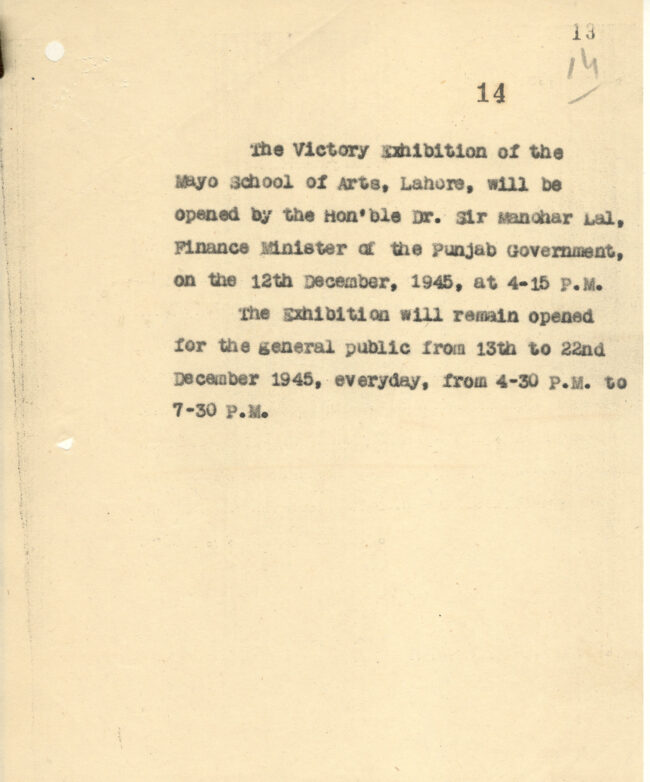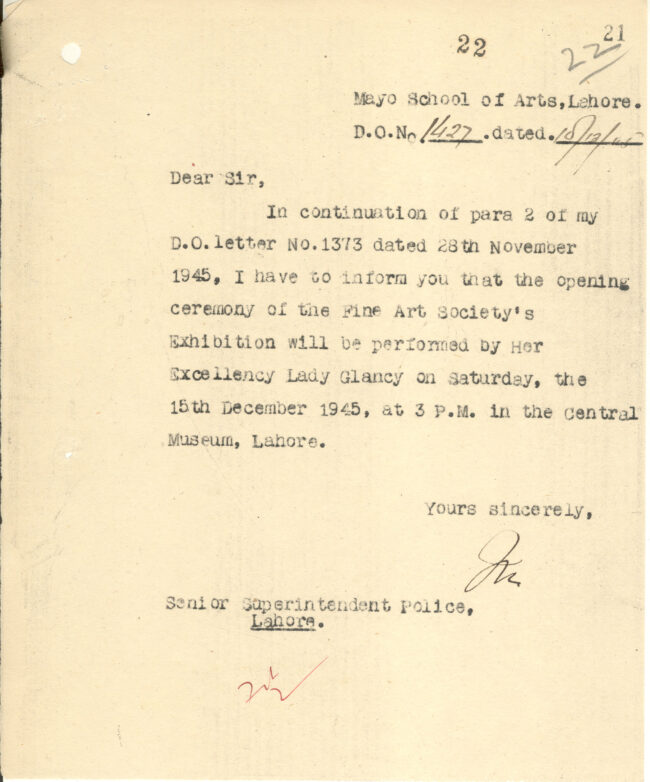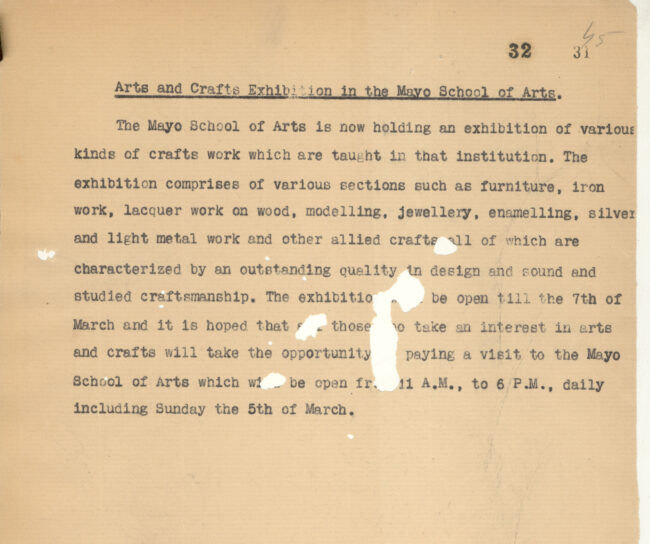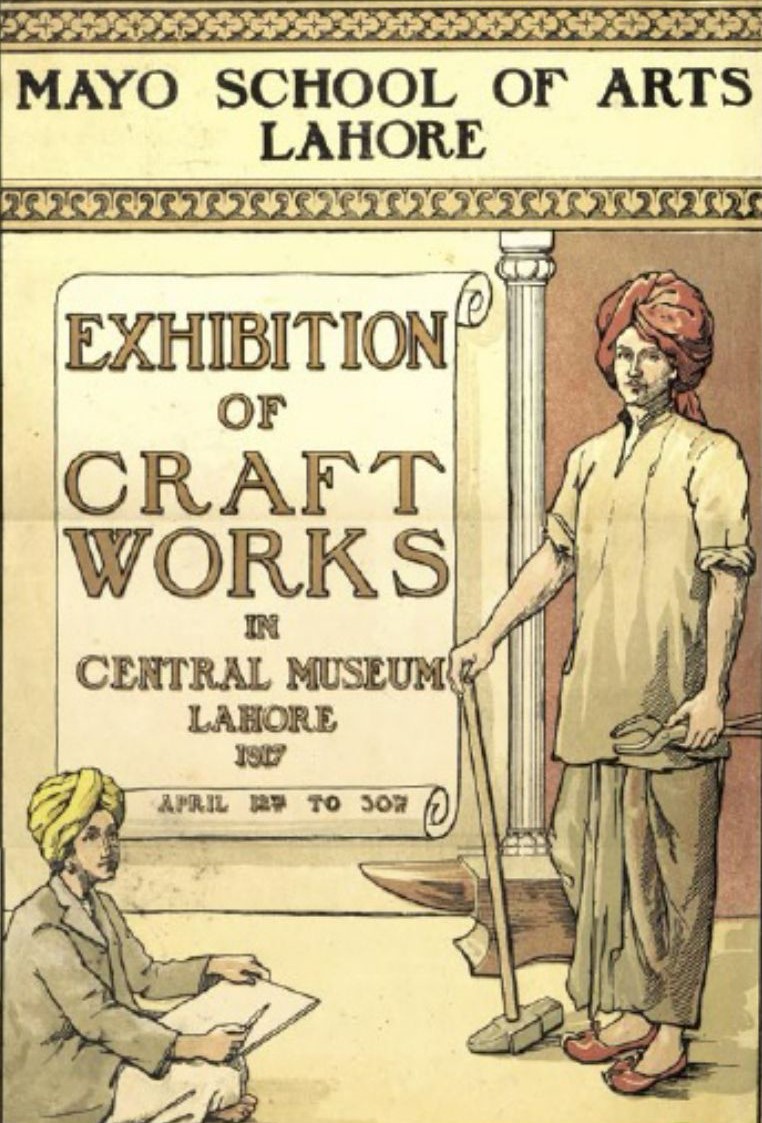The Mayo School of Arts used public craft exhibitions to elevate local artisanship and shape a lasting, community-rooted art education. Since its
The Mayo School of Arts used public craft exhibitions to elevate local artisanship and shape a lasting, community-rooted art education.
Since its establishment in 1875, the Mayo School of Arts (now the National College of Arts, Lahore) played a pioneering role in institutionalizing art education in colonial India. Among its most vital undertakings was its early and sustained emphasis on the crafts—not merely as utilitarian labor but as vital cultural expressions worthy of aesthetic appreciation and public celebration. The archival records from the early 1900s reveal a sustained institutional commitment to the public display of craft through meticulously organized exhibitions that brought together artisans, students, bureaucrats, and art patrons.

One such document, a 1932 letter from the school, invites a guest to a private viewing of a craft exhibition described as “perhaps the best we had so far.” It reflects the school’s deliberate attempts to engage civic and social elites in craft appreciation. Another record announces a large-scale Victory Exhibition held in December 1945, attended by Punjab’s Finance Minister Sir Manohar Lal, showcasing the enduring significance of the school’s exhibitions even at the twilight of British rule.

A third typed announcement from the archives outlines an earlier exhibition featuring a wide range of disciplines—furniture, iron and lacquer work, jewelry, silver and light metalwork—celebrated for their “outstanding quality in design and sound and studied craftsmanship.”

These exhibitions were not minor events but major cultural moments, open to the public, thus underlining the school’s dedication to making art accessible and visible beyond its academic walls. Through these exhibitions, the Mayo School advanced an educational and cultural agenda that validated the region’s artisanal heritage, countering colonial narratives that often dismissed local crafts as inferior.

By spotlighting crafts in the public realm, the school positioned itself as both a conservator of tradition and a laboratory for modern design thinking. These early exhibitions laid the foundation for what NCA continues to champion today: a pedagogy rooted in material practice and community engagement.

Photographs Courtesy: NCA Archives
